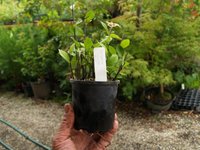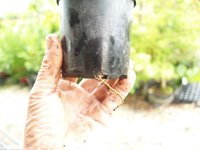zeejet
Mame
I've haphazardly rooted a number of cuttings in a propagation box starting in late spring after thinning some new growth on the mother trees and surprised to find that many of them have rooted (Japanese maple, trident maple, unknown prunus, Chinese elm, etc).
I used 3" pots in a Sterilite container for humidity - 1.6% IBA Hormex powder
I don't have much experience with cuttings but what do I do at this point? In my limited experience, a lot cuttings start to rot if kept in the humid environment too long - but I don't think summer is a great time to transplant to a larger container outside of the prop box.
I used 3" pots in a Sterilite container for humidity - 1.6% IBA Hormex powder
I don't have much experience with cuttings but what do I do at this point? In my limited experience, a lot cuttings start to rot if kept in the humid environment too long - but I don't think summer is a great time to transplant to a larger container outside of the prop box.








